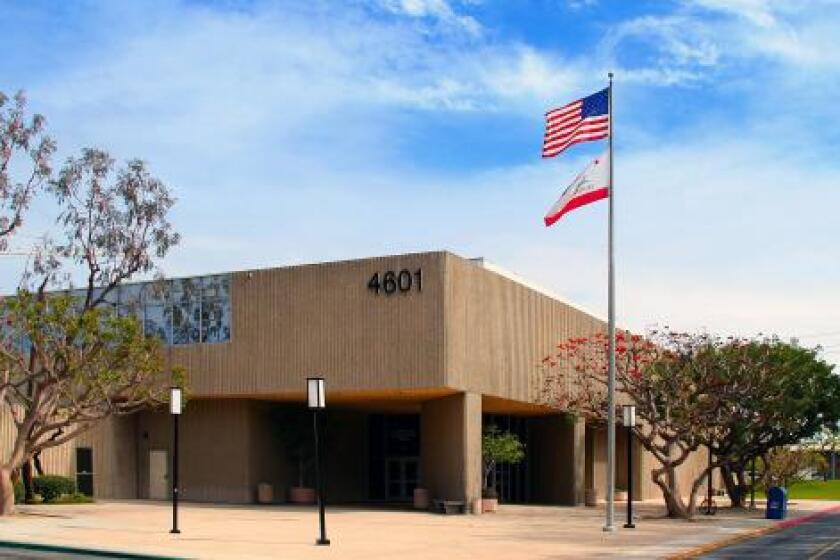Blood target not red enough at Hoag
- Share via
Mathis Winkler
HOAG HOSPITAL -- Officials here are battling a crisis reminiscent of
California’s energy problems. But the equivalent of a blackout in blood
supplies is much more likely to claim lives.
Last week, the American Red Cross in Southern California alerted
hospital officials that supplies of O-positive red blood cells had
plummeted to 13% of what’s needed in just one day.
Known as the universal blood type, because it can be given to anyone,
type O blood units are crucial in emergency situations when doctors don’t
have enough time to determine a patient’s blood type.
With about 65% of Hoag’s blood supplies coming from the Red Cross,
hospital officials swiftly reacted to the situation. They appealed to
hospital employees to donate blood and about 150 people with the type O
blood did so.
“From that response, we made it through the immediate crisis,” said
Randy German, Hoag’s blood bank supervisor.
Sitting in the hospital’s blood donor center after donating his type O
blood Monday morning, Michael Yates, who works in Hoag’s recruitment
office, said he tries to donate his blood whenever possible.
“I’m usually a regular,” he said, adding that while he had not made a
donation pitch during recruitment presentations for college students, he
said he’d consider doing that in the future. “I’m willing to help out.”
But because the hospital uses about 40 units of blood each day, things
might become problematic again soon unless eligible donors come in and
help.
A growing demand for blood because of population growth and more
aggressive cancer treatments that require more blood transfusions is one
of the reasons supplies have dwindled, German said.
The arrival of summer and vacations reduce the number of people
available to give blood, he added.
But most of all, Californians just don’t seem to be big fans of giving
away their blood. Careful screenings for infectious diseases already
limit the number of people who may give blood -- among others, anyone
perceived to be at risk of contracting HIV is excluded, as are people who
have lived in the United Kingdom for an extended period of time, because
they might carry mad cow disease.
That said, only 2% of eligible Californians give blood and about
one-third of the state’s blood supply is imported from other states.
“My problem is the more self-absorbed generation,” said Alice Johnson,
who works as a recruiter at Hoag’s blood donor center. Because people
can’t work out at the gym after donating blood, some use a scheduled
session with their trainer or a spin class as an excuse, Johnson said.
“It’s a very selfish attitude,” she said.
Then there are others, such as Steve Layton and Tim Ward, who
regularly come in to donate.
Layton, a principal with a Newport Beach real estate company, has
offered his employees the opportunity to donate blood on company time. On
Monday, he said he expected about 15 to 20 company officials to donate
later in the day.
Ward, a Newport Beach resident who has donated blood for 17 years,
said the issue struck home last year when his sister needed more than 200
blood units after going through liver failure.
Without the donations, “my sister would have been dead,” he said.
For Johnson, it’s all about getting people to visit her at the blood
donor center and getting a chance to show them what they can do by giving
up 45 minutes of their time.
“My concern is that it’s an educational issue,” she said. By donating
blood, “you literally make a difference in someone’s life.”
FYI
To donate blood, a person must be at least 17 and in good health,
weigh at least 110 pounds and not be at risk for HIV/AIDS or other
blood-borne infectious diseases. While Type-O blood is needed the most,
hospital officials urge people with all blood types to donate. To make an
appointment, call (949) 760-5621.
All the latest on Orange County from Orange County.
Get our free TimesOC newsletter.
You may occasionally receive promotional content from the Daily Pilot.



